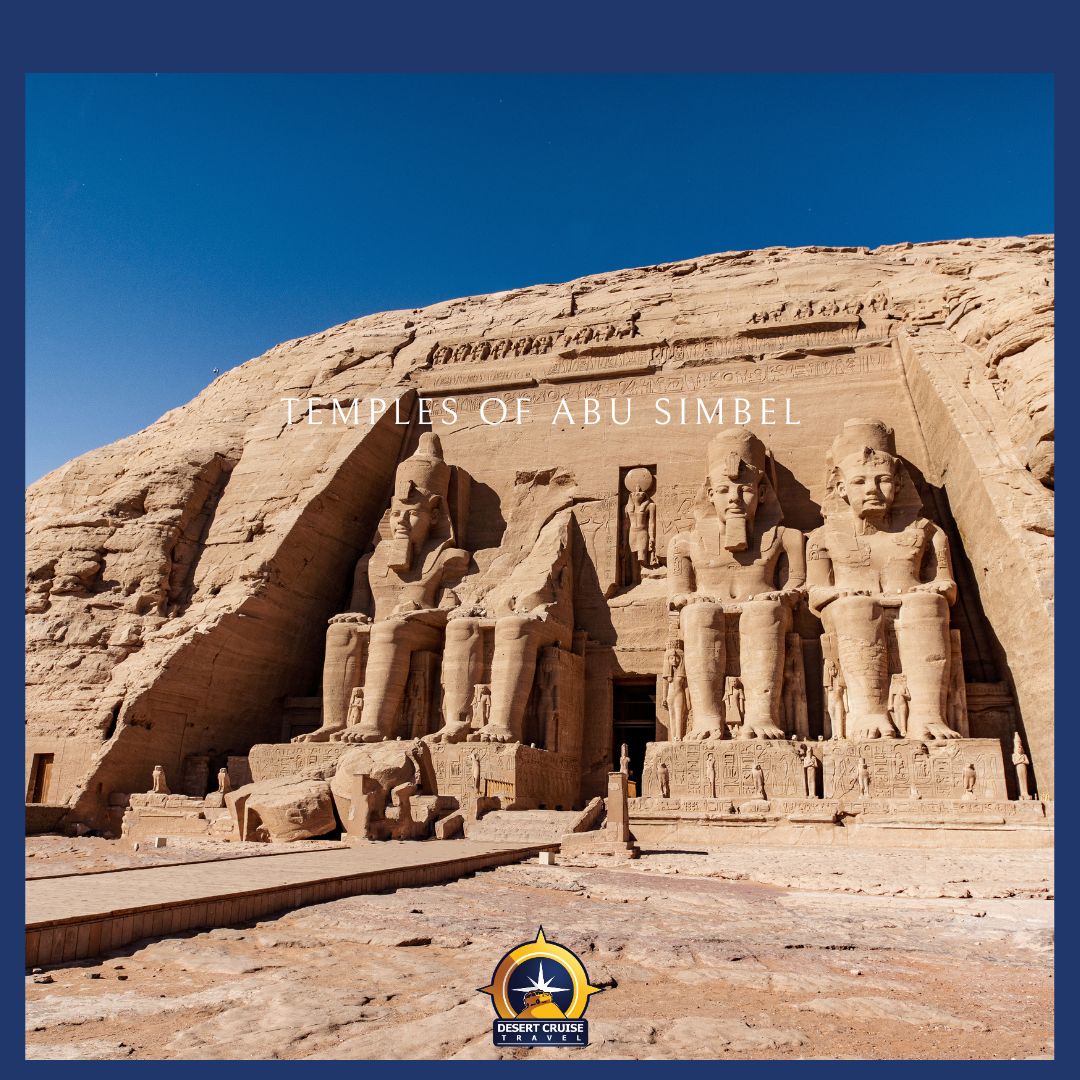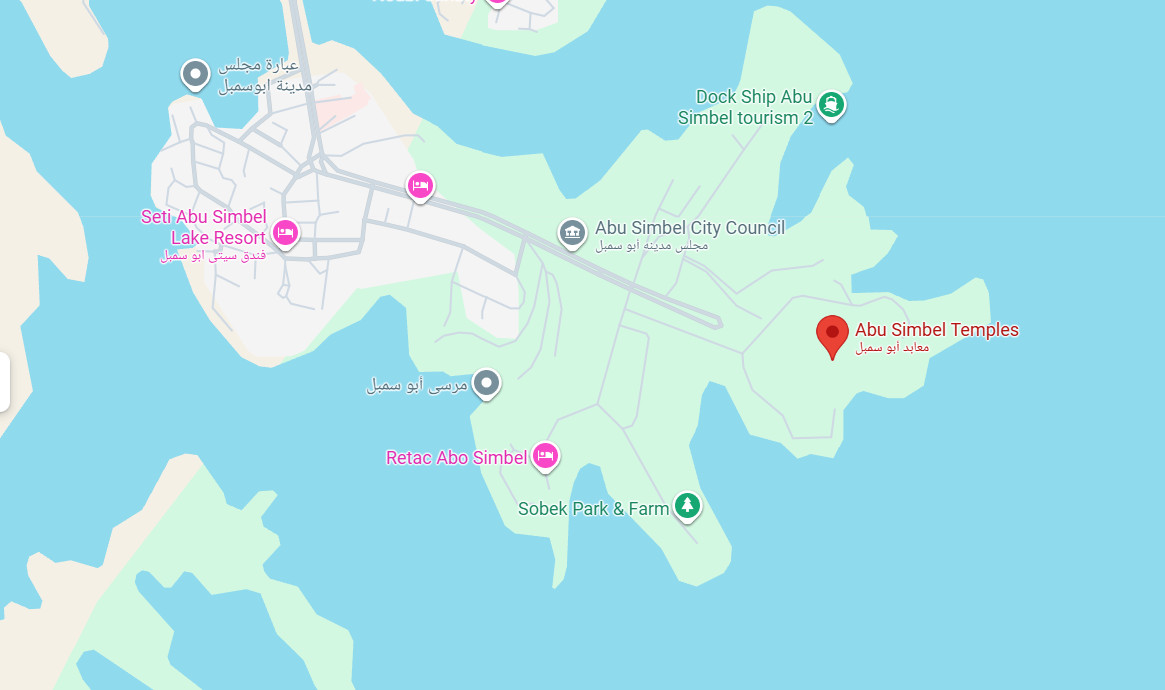When travelers think of Egypt, the mighty pyramids and the Sphinx often come to mind. Yet, hidden in the golden sands of Nubia lies another awe-inspiring treasure: the Abu Simbel Temples. Carved more than 3,000 years ago during the reign of Pharaoh Ramses II, these monumental structures are more than just stone they are a living testament to ancient Egyptian genius, artistry, and power.
Visiting Abu Simbel is like stepping into history itself, where colossal statues and intricate carvings reveal untold stories of pharaohs, gods, and cosmic alignment. If you’re seeking to uncover the true magic of Egypt, this site is a must-see. In this article, we’ll explore the most fascinating facts about Abu Simbel, its history, mysteries, and why this destination should be on every traveler’s bucket list.
Abu Simbel Temples

Where are the Abu Simbel Temples located?
The Abu Simbel Temples are located in southern Egypt, near the modern town of Abu Simbel in Aswan Governorate. They sit on the western bank of Lake Nasser, approximately 280 kilometers (174 miles) southwest of Aswan city.
Originally, these temples were carved directly into a mountainside along the Nile River, but after the construction of the Aswan High Dam in the 1960s, they were relocated to higher ground to avoid submersion. Today, they remain one of Egypt’s most remarkable UNESCO World Heritage Sites, standing proudly in the Nubian Desert, close to the border with Sudan.
Their location makes them remote but incredibly rewarding. Many travelers choose to visit as part of a guided tour from Aswan, either by road or a short flight, making the journey itself a thrilling adventure.
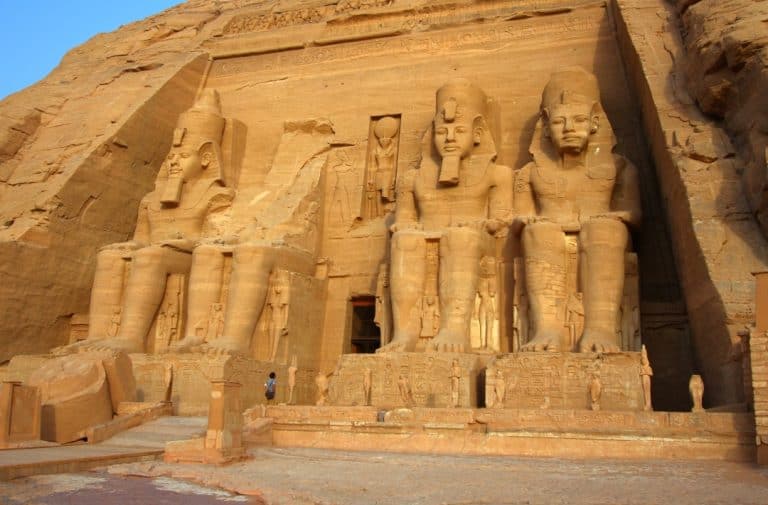
Why were the Abu Simbel Temples built?
The temples of Abu Simbel were commissioned by Pharaoh Ramses II, one of ancient Egypt’s greatest rulers, around 1264 BCE. There were two main reasons for their construction:
- Demonstrating Power and Legacy
The Great Temple, dedicated to the gods Amun, Ra-Horakhty, and Ptah, was built to showcase Ramses II’s divine authority and military victories. The four colossal statues at the entrance represent the pharaoh himself, each standing at an astonishing 20 meters tall. They symbolized strength, dominance, and eternal presence. - Honoring the Gods and the Queen
Beside the Great Temple lies the smaller Temple of Hathor, dedicated to Ramses II’s beloved wife, Queen Nefertari, and the goddess Hathor. It was rare in ancient Egypt for a queen to be so prominently honored, making this temple a touching testament to their relationship.
Together, the temples were political, religious, and personal statements carved in stone meant to impress subjects and intimidate neighboring regions.
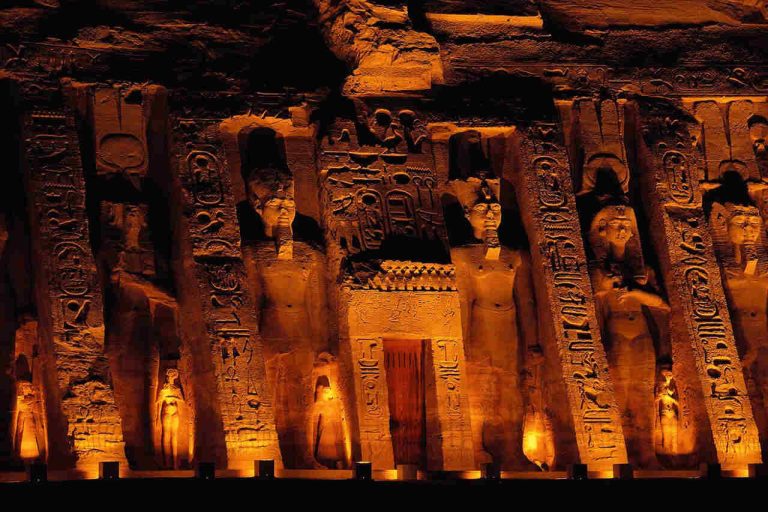
Facts about Abu Simbel Temples
Here are some of the most fascinating facts about Abu Simbel that highlight its uniqueness:
- Colossal Statues: Each statue of Ramses II at the Great Temple is around 66 feet tall, making them some of the largest sculptures from the ancient world.
- Hidden Artistry: Inside the temples, intricate wall carvings depict the Battle of Kadesh, where Ramses claimed victory over the Hittites, one of history’s earliest recorded battles.
- Astrological Precision: The temple was designed so that sunlight illuminates the inner sanctum only twice a year, showcasing the Egyptians’ advanced astronomical knowledge.
- Symbol of Love: The smaller temple of Queen Nefertari is one of the very few in Egypt where a queen’s statues are carved at the same height as the pharaoh’s, symbolizing equality and deep affection.
- UNESCO Rescue Mission: Without the relocation project of the 1960s, the temples would have been lost underwater due to Lake Nasser’s rising waters.
These facts about Abu Simbel show why it continues to captivate historians, archaeologists, and travelers alike.
“Explore Egypt like never before on the 8-Day Cairo & Nile Cruise Tour – book your adventure today!”
The Relocation of the Abu Simbel Temples
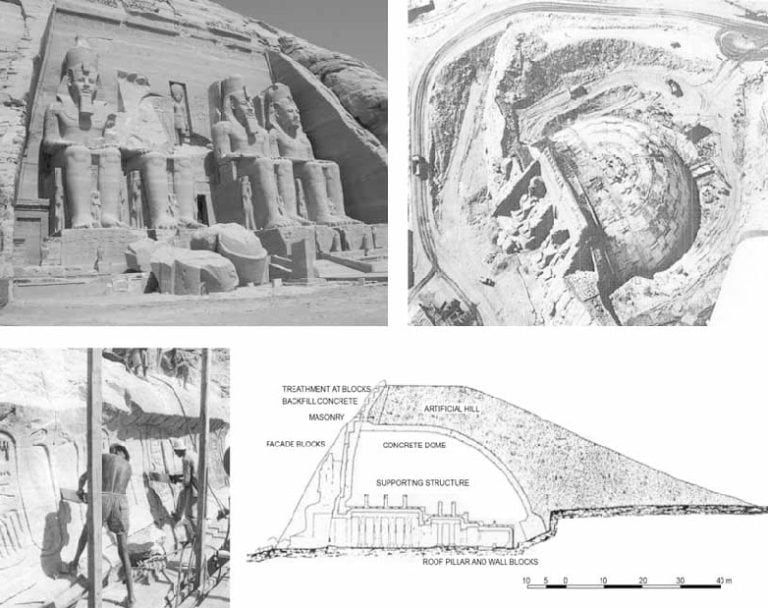
Relocation of the Abu Simbel Temples
One of the most extraordinary modern engineering feats was the relocation of Abu Simbel in the 1960s. When Egypt built the Aswan High Dam to control the Nile’s flooding and generate hydroelectric power, the resulting Lake Nasser threatened to submerge these ancient temples forever.
In an unprecedented international effort led by UNESCO, the temples were carefully cut into large blocks, weighing up to 30 tons each, and reassembled on higher ground. This relocation project lasted four years (1964–1968) and cost about $40 million.
Thanks to this ambitious rescue mission, Abu Simbel was preserved for future generations and became a symbol of global cooperation to protect cultural heritage.
Interesting Facts About Abu Simbel Temples
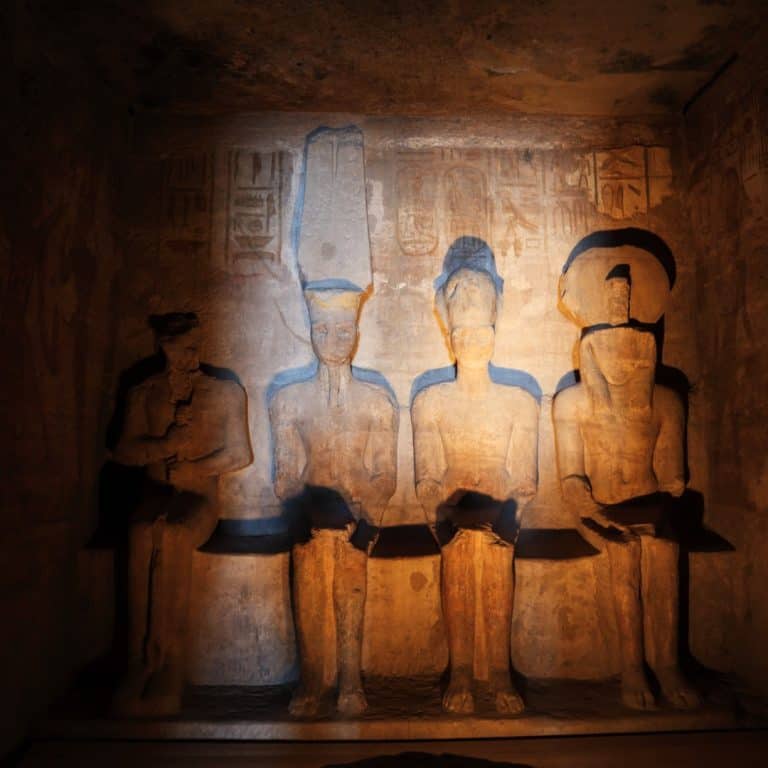
Alignment of the Sun with the Temple of Ramses II, Abu Simbel
Perhaps the most magical aspect of Abu Simbel is its astronomical alignment. Twice a year on February 22 (believed to mark Ramses II’s coronation) and October 22 (possibly his birthday) sunlight pierces the temple’s entrance and illuminates the inner sanctuary.
On these mornings, the sun’s rays travel through the temple’s corridor to light up the statues of Ramses II and the gods Ra-Horakhty and Amun, while the statue of Ptah, the god of darkness, remains in shadow.
This phenomenon continues to attract thousands of visitors, who gather to witness this spectacular blend of architecture, astronomy, and spirituality an achievement that still amazes scientists and historians.
Visiting Abu Simbel Temple: Hours, Best Time, and Travel Tips
Opening Hours: The Abu Simbel temple is open daily from 6:00 AM to 5:00 PM.
Best Visiting Period: The ideal months to visit are October through April, when the weather is mild and comfortable.
Recommended Visiting Time of Day: Arrive early in the morning (around 6:00–8:00 AM) to avoid crowds and enjoy cooler temperatures. Late afternoon visits are also pleasant for photography and sunsets.
Recommended Duration: Allocate 2–3 hours to explore both temples fully.
How to Reach: You can travel by road, a short flight from Aswan, or join a guided Nile cruise tour.
How Desert Cruise Travel can make your trip to Abu Simbel special?
Visiting Bahariya Oasis is a once-in-a-lifetime experience, and Desert Cruise Travel can make it even more extraordinary:
Expert-guided tours provide in-depth knowledge about the oasis, its history, and local culture.
Customized itineraries allow you to combine desert adventures, archaeological exploration, and relaxation in hot springs.
Comfortable transport ensures a smooth journey from Cairo or nearby cities to the heart of the oasis.
Exclusive experiences include overnight stays in luxury desert camps, private safaris, and authentic interactions with local communities.
With Desert Cruise Travel, your visit to Bahariya Oasis is not just a trip it’s a curated adventure full of unforgettable moments.
Conclusion
The facts about Abu Simbel reveal that this site is far more than an archaeological wonder it is a symbol of power, love, art, and human ingenuity. From the colossal statues of Ramses II to the tender homage to Queen Nefertari, from its miraculous relocation to its celestial alignment with the sun, Abu Simbel continues to inspire awe.
For travelers seeking to explore Egypt beyond the pyramids, a journey to Abu Simbel offers an unforgettable adventure. Let the magic of ancient history surround you, and allow Desert Cruise Travel to guide you through this extraordinary chapter of Egypt’s timeless legacy.

